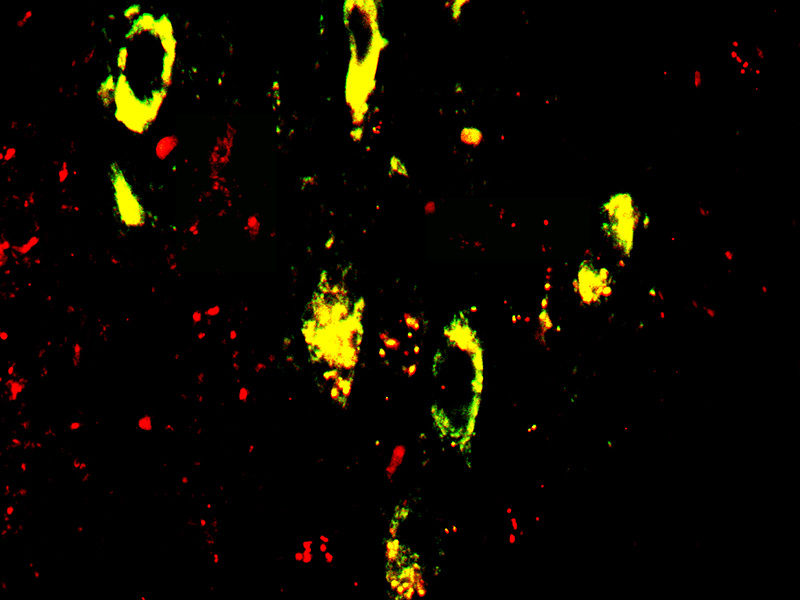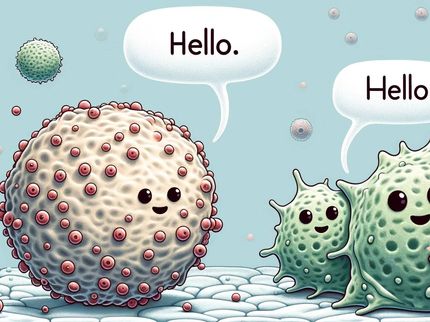Computer tool analyzes in detail genetic alterations in the genome of cancer cells
Developed by CSIC, CiberAMP allows establishing direct correlations between changes in the number of gene copies in tumor cells and their expression levels
A team of researchers from the Salamanca cancer Research Center (CIC-CSIC-US), a joint institute of the Spanish National Research Council (CSIC) and the University of Salamanca, has developed a new computer tool, called CiberAMP, to analyze in more detail the genetic alterations in the genome of cancer cells. The tool makes it possible to establish, for the first time, direct correlations between changes in the number of copies of genes that occur in tumor cells and their expression levels, as well as to identify genetic alterations with a direct role in the development of cancer. The work has been carried out by the laboratory led by the CSIC researcher Xosé Bustelo, from the CIC-CSIC-US, the Center for Biomedical Research in Cancer Network (CIBERONC-CSIC-US) and the Cancer Connection of the CSIC. It is published in the journal Biology.

Image of cells from the brain, the organ where glioblastoma develops.
CSIC
"This new tool, which is easy to use by any user without the need for extensive computer skills, gives us information on the degree of correlation between the change in gene copy number and their expression levels using genomic data available for 33 different types of tumors obtained after the study of more than 11,000 patients," explains Rubén Caloto, researcher at CIBERONC-CSIC-US and lead author of this work. "In addition," Caloto points out, "it allows us to know the genomic context of these genetic alterations, which gives us very valuable information to know whether these altered genes have important functions in the development of these tumors. And it is also very flexible, since with it we can study a specific gene in a specific tumor or, alternatively, thousands of genes in any tumor or group of tumors we want."
New tools
Characterization of the genome of major tumors has led to the discovery of thousands of associated genetic alterations. Many are point changes in our genome that can result in the activation or inactivation of genes that favor or antagonize cancer development, respectively. However, in many other cases, these genetic alterations do not involve point changes, but rather changes in the number of copies of various sized pieces of our chromosomes, the structure that houses our DNA within our cells. The functional significance of this second type of genetic alterations, which may involve the gain or loss of genes involved in these chromosome changes, is difficult to establish.
In principle, it is assumed that a gene that has increased its copy number could help the development of cancer. Alternatively, genes that have been deleted could be related to suppressor functions of tumor development. However, a gene with no role in cancer development may increase its copy number simply because it is close to another gene that does play key roles in cancer development. Likewise, many genetic alterations have no real value, since only those that determine changes in the expression of the genes contained in the chromosomal alteration can contribute to changes in cell behavior. This is not always the case. For example, there are cases in which the gain in the number of gene copies does not translate into changes in the expression of these genes. Knowing which are the key elements in this process is essential to subsequently develop new diagnostics and treatments specifically directed against these tumors.
To solve this problem, new informatics tools are needed that, using currently available genetic information from multiple tumors and patients, can provide information on the correlation between gene copy number changes and gene expression levels in cancer cells. These tools are also needed to provide information on the genes contained in these chromosomal alterations to identify those that have important roles in the development or malignancy of specific tumors.
Genetic alterations linked to glioblastoma
To demonstrate the utility of this new bioinformatics tool, the research group used CyberAMP to analyze the possible functional significance of genetic alterations linked to gene copy number change in a brain tumor called glioblastoma. "The use of CyberAMP allowed us to discover 74 genes that may play a key role in the development of this tumor type. Of these genes, 38 were already known to be involved in this or other tumors, which is logical given the large number of studies that have been conducted on cancer in recent decades. However, the remaining 36 genes identified are new, which means that we will have to focus on their study in the coming years," says Bustelo.
"The interesting thing, second author of the article, is that this type of study can be done for any other tumor type for which genomic data are available from a significant number of patients, which makes it suitable for general use by any researcher or oncologist," says Francisco Lorenzo-Martín, a scientist at the CIC-CSIC-US and second author of the article. To facilitate this general use, the new software tool is freely available to the public. And it can be installed on any computer.
The groups of Víctor Quesada, from the University of Oviedo and CIBERONC, and Arkait Carracedo, IkerBasque scientist at CIC-Biogune in Derio (Bilbao), also belonging to CIBERONC, have collaborated in this work. The research is part of the objectives of the CIBERONC's Tumor Progression Mechanisms Program and has been made possible thanks to funding from the State Research Agency, the Carlos III Health Institute, the La Caixa Foundation, the Spanish Association for Cancer Research and the Ministry of Education of the Regional Government of Castilla y León. The activities of the Salamanca Cancer Research Center are also supported by the Escalera de Excelencia of the Junta de Castilla y León and FEDER funds.
Note: This article has been translated using a computer system without human intervention. LUMITOS offers these automatic translations to present a wider range of current news. Since this article has been translated with automatic translation, it is possible that it contains errors in vocabulary, syntax or grammar. The original article in Spanish can be found here.





















































